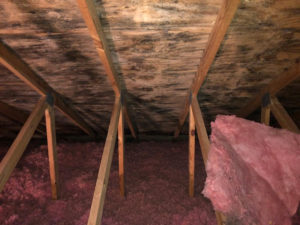How to Prevent Mold
Yesterday, I received a call from my niece who was concerned that she may have mold in her condo in California. Since I am in New York and was obviously not in a position to go over there, although a few days in the sunshine wouldn’t be such a bad thing, I asked her a few questions and then proceeded to give her the requisite advice. I thought I would share some of this information regarding mold prevention.
First, one should consider the three most common areas of a house that mold begins growing: the basement, the attic and the bathrooms. Each area can be addressed with a different solution.

Hire a Professional Waterproofing Company

Why Attics get Mold ?

Bathrooms should have properly sized fans that, as expressed earlier, are vented to the outside. They should be always used during showering and left to run for 15-30 minutes afterward to rid all steam and humidity from the bathroom. Bathrooms, especially in the tub and shower areas should be regularly cleaned so mold will have a chance to grow.
The rest of the house should be kept as clean as possible, and it is worth investing in a HEPA vacuum cleaner to use on the surfaces. And under no circumstances should a humidifier be used in a house. That is asking for mold trouble. The key to remember is that mold requires moisture to grow. The more moisture is controlled through dehumidification and cleanliness, the less chance there is to encounter a problem that merits mold testing.
